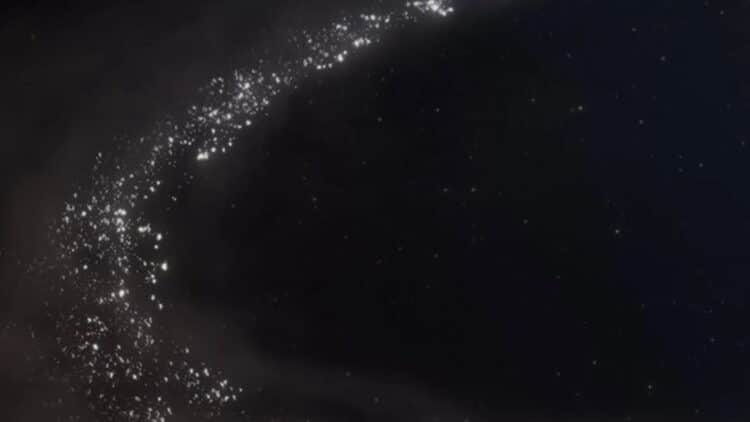Once again, NASA has managed to make a historic discovery: a frozen disk has been detected in space. Scientists already knew that there was ice outside of Earth, but not in the form that was recently discovered. So no, it is just ordinary ice, but a revelation that could change the way we investigate the formation of planets, including our own. In addition to being the starting point for new studies.
Where in space was this frozen disk found?
In addition to this discovery being historic due to the type of ice found in the frozen disk, the location of this landmark is also noteworthy: a young star very similar to the Sun. Scientists have named it HD 181327.
The frozen disk was found around this young star and, surprisingly, measured approximately 37 trillion kilometers in size. Just to give you an idea, this is equivalent to more than 4,000 times the distance from Earth to the Sun. And as if this discovery were not enough, scientists identified that this disk was full of fragments of rocks, dust, and ice.
This scenario even has similarities with the Kuiper Belt, a region of our solar system where Pluto and comets orbit. But the real surprise was the type of ice found there: crystalline water ice.
What’s behind this frozen disk?
To get all the details with precision, scientists used NASA’s James Webb Telescope, along with the NIRSpec tool, to analyze infrared light reflected by dust and ice particles on the frozen disk. From this, they were able to observe an unprecedented fact: the clear presence of water ice outside our solar system.
Why is this so historic? Well, this form of ice is similar to what we find in icy bodies in our solar system, such as Saturn’s rings, for example (other hidden objects are being detected in our solar system). Therefore, when detecting this type of ice, one can assume that it formed in stable environments, with low temperatures and controlled pressure, that is, all the essential conditions for the formation of planets.
Why is this discovery so important for the future of science?
You know when you’re certain of the answer to something, and the proof finally comes in and it agrees with what you predicted? Well, that’s exactly what the discovery of this frozen disk represents for scientists. By finding crystalline water ice in the region, the hypothesis that frozen water is essential in the formation of habitable worlds only reinforces this idea.
“When I was a graduate student 25 years ago, my advisor told me there should be ice in debris disks, but prior to Webb, we didn’t have instruments sensitive enough to make these observations. What’s most striking is that this data looks similar to the telescope’s other recent observations of Kuiper Belt objects in our own solar system”, said Christine Chen, co-author and astronomer at the Space Telescope Science Institute in Baltimore.
By detecting ice in a system as young as this star, scientists can now assume that the presence of water may be common in many other planetary systems. This increases the number of places where the conditions for the emergence of life could arise.
Knowing where we came from is one of the main dilemmas for scientists, and this is not just to satisfy our curiosity, but also to identify other worlds with the potential to harbor life. Recently, water was found outside of Earth, and, as many may already think, it was not on Mars. There’s another planet out there whose conditions could be favorable for life.


